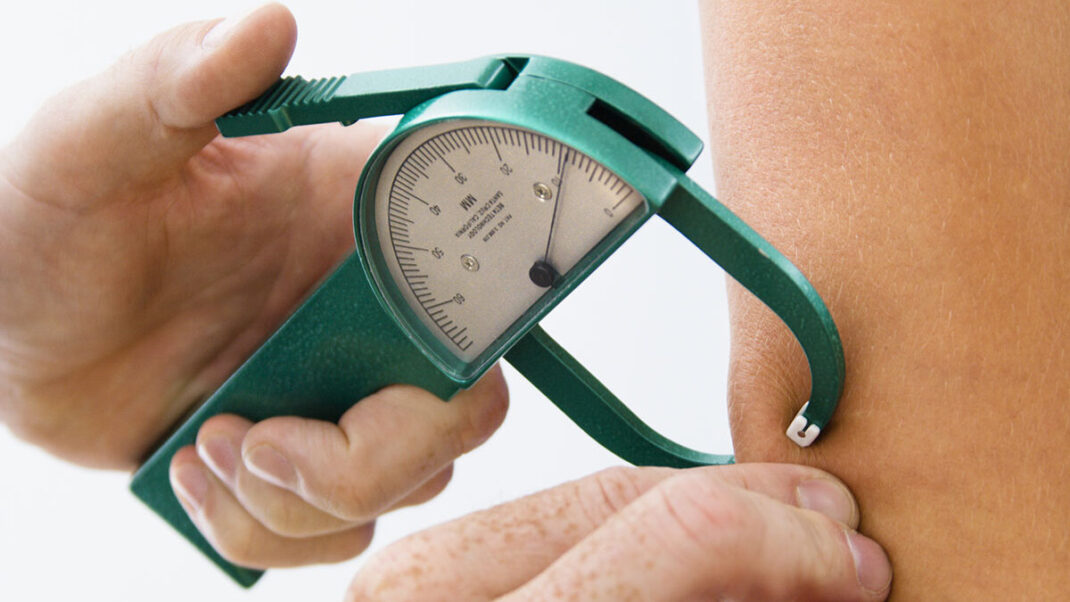Is Advertising on Social Media Worth the Cost?
How to make paid promotions work for you.

Remember social media 5 or 6 years ago? A lot of people thought of Facebook and Twitter as “free advertising” hubs for companies and entrepreneurs, because it was easier back then to gain attention with your posts (Snapchat and Instagram were just getting started at that time). If you were committed to posting decent content, you could expect ample clicks, likes, replies, etc. Now, however, times have changed.
All the major social platforms have evolved, and in 2017 they are much more competitive. Joining any social media network is still free, but you can’t take it for granted anymore that many people will see what you post there, even if it’s good content. You’re more likely to have to pay for greater reach. These days, most marketing experts agree that allotting advertising dollars to social media sites should be part of any company’s social media strategy.
But how can you tell if sponsoring posts and advertising on social media are worth the cost? And how much should fitness companies and entrepreneurs expect to spend? This article unpacks some of the major considerations associated with advertising on social media, particularly Facebook.
Is Advertising Really Necessary?
It’s still possible to be successful on social media without advertising. Not all posts require a pay-to-play approach, and in fact, some should remain organic (i.e., unpaid). But going the ad-free route takes extra time and effort. “You can achieve results organically, but it is much easier with paid advertisements,” says Los Angeles–based Claudia Sheridan, MBA, co-founder of FitCore Media and owner of Small Business Breakthrough.
“We live in a digital age now,” says Khaled Elmasri, founder of Nor-Cal Fitness Summit and RISE Fitness Business Coaching in Redwood City, California. “To truly reach a higher percentage of people, you need to be running ads.”
Not only does advertising help you reach more people (and therefore generate more leads and/or sales); it also helps you bypass algorithm “rules,” which could otherwise work against you. For example, when Facebook’s algorithms detect that an unpaid post contains promotional language—such as “sale,” “save,” “special discount,” etc.—the company is less likely to send that organic post out to lots of people in the news feed. In other words, you’ll get less reach, so you’re better off paying for more people to see it.
Even when a post does quite well organically, it doesn’t hurt to amp it up with ad spending. “The best way to think of paid ads is to use them to amplify great content and offers,” says Scott Rawcliffe, a social media marketing consultant for fitness pros, and the founder of Social Media Marketing Muscle, based on Australia’s Gold Coast. “If your organic/unpaid post reaches 1,000 people and you get two new clients, why wouldn’t you want to amplify it to 10,000 and get 10 new clients?” says Rawcliffe. “If you only rely on organic/unpaid posts, you’re missing out on a huge opportunity to not only get more clients, but expand your reach.”
Not every paid post needs to be selling something. A well-rounded ad strategy could involve reaching other goals that are directly or indirectly related to ROI (return on investment). Rawcliffe has promoted posts for multiple purposes: “We’ve focused on staying in our prospects’ news feeds on a weekly basis, making sure that we are also spending at least 50% of our budget on promoting blog posts, informational/education videos, client testimonials and Facebook Live videos.” However, you want to resist paying simply for the satisfaction or vanity of gaining additional likes on a post—always consider ROI to avoid wasting money.
Where to Start With Paid Social Media
When done right, you can expect to see good results with social advertising. Speaking about the benefits his clients have gained, Rawcliffe says, “The two biggest benefits for using paid social media have been generating a lot more leads and clients, and becoming known as the experts in their area.”
To arrive at similar benefits on your own social channels, you must first narrow the scope of possibilities. Should you advertise on all social channels? Just on the ones you use? Or somewhere else? “Advertising can get a bit complicated and costly if you don’t know where your target audience is hanging out,” says Elmasri. “Fitness pros must know who they’re advertising to and the interest and demographics of what I call your client avatar.”
As far as social channels are concerned, Elmasri says there’s one safe bet for most target audiences, and that’s Facebook, the largest social network. Sheridan agrees. “When it comes to advertising, it’s important to reach your customers where they are, and they’re definitely on Facebook,” she says. As such, this article focuses mainly on Facebook advertising.
Apart from having the most users, Facebook, in particular, offers robust advertising features, allowing you to fine-tune your promotions in myriad ways. “With Facebook’s microtargeting capabilities, you can place your message in front of the right audience at the right time,” says Sheridan, author of The Ultimate Guide to Getting Started on Social Media: What Every Small Business Owner Should Know (Create Space 2016).
You can even drill down to narrowly defined details about your target audience, making it feasible to reach people who own an iPhone (or Android or iPad or Kindle), drive a particular brand of automobile, have kids of a certain age (or no kids), are retired, shop at certain stores, etc. (Note: This access to marketing data is available in the United States; it might not be available in all countries.)
While most people think of amplifying posts that have already been published to their Business Page, it’s also possible to create new sponsored content that won’t appear on your Page but will appear in the news feeds of Facebook users you target (this is known as a dark post). See the sidebar “Tools for Advertising on Facebook” for a list of tools you can use to advertise and reach target audiences on Facebook and Instagram.
What’s a Typical Advertising Budget?
Fortunately, you don’t need a massive budget for social advertising. In fact, Rawcliffe advises frugality at first. “I’m a huge advocate of starting with small budgets and slowly increasing your ad spend,” he says. What’s the going rate? While budget largely hinges on your goals, many experts suggest that small businesses invest $5–$20 per day for Facebook ads (large companies with many followers can expect to pay more). Keep in mind that the need to run ads might ebb and flow, so a daily budget might not extend to an entire month or year.
Similar to regular, everyday posting on social media, advertising on Facebook and other sites involves trial and error. Watch closely to gauge each ad’s success. Tweak (or start over) as needed. You might even try A/B testing, where you release two similar ads—but with different images, different captions or different calls to action—then track which one performs best. Sheridan points out that your initial investment will be spent on determining best practices. “Once you know what works, you’ll eventually spend less money to achieve your desired results,” she says.
“The biggest thing to figure out before you start increasing your budget is what it costs you to get a new client, or in marketing terms, your Cost Per Acquisition,” says Rawcliffe. “This is as simple as taking the total amount you spent and dividing it by how many new clients you signed up. For example, if you spent $100 on advertising and gained four new clients, your Cost Per Acquisition was $25. “Once you get an idea of what a new client costs you, you can increase your budget with more confidence,” says Rawcliffe.
Elmasri follows this logic when advertising his Nor-Cal Fitness Summit. “Depending on how an ad does, based on the metrics Facebook gives you, I either spend more money or kill the ad,” he says. “If a ticket to my summit is $300 and I spend $20 a day to acquire one ticket sale [per day], my ROI is $280 dollars.” That outcome is worth the ad spend.
Final Words of Advice
Rawcliffe recommends testing the waters with social advertising by strategically boosting a few posts. “By ‘strategic,’” he says, “I mean making sure to target people who are actually within the area of your gym. Boost a post that either provides value to your audience and positions you as the expert, or markets a program or service you offer.”
Analyze results and repeat until you find a winning combination of caption, image, call to action and targeting. “It takes time to achieve results on Facebook—or any other social media channel,” says Sheridan. “You get out of it what you put into it.”
Finally, if you’d much prefer to be training abs in the facility than testing ads on Facebook, consider hiring someone who can manage the whole process for you. Whether you handle advertising yourself or work with a consultant/agency, be patient in your expectations. Says Sheridan, “The longer you stick with it, the better your results will be.
For more information and support on advertising on Facebook and Instagram, visit these websites:
- www.JonLoomer.com
- www.MariSmith.com
- www.SocialMediaExaminer.com
- https://AdEspresso.com (by Hootsuite)
- https://BlitzMetrics.com
Facebook offers multiple tools as part of its advertising platform. Here’s what you can choose from:
Ads Manager is helpful for creating, organizing and managing multiple ads. You can access it by searching “Create Ads” or “Manage Ads” in the drop-down menu on your Facebook Profile Page or at the following link: www.facebook.com/business/products/ads. Compared with the other options listed below, Ads Manager provides the best array of features without the steeper learning curve.
Power Editor offers more precise options than Ads Manager but has a higher learning curve. Power Editor is especially good for large advertisers who want to create, publish and monitor multiple ads all at once. You can access it through select browsers, including Chrome and Firefox: www.facebook.com/powereditor.
Boosted Posts allow you to quickly promote a post directly from your Facebook Business Page so it gets more reach. To do this, click the “Boost Post” button in the post itself. (You must hold a certain managing role with the Page—such as admin, editor or advertiser—to boost a post.) You won’t have as much choice for fine-tuning and targeting boosted posts as you would with Ads Manager.
You can also use Facebook’s Ads Manager or Power Editor to create and run Instagram ads. To do so, you’ll need a Facebook Business Page and an Instagram Business Profile. Alternatively, an easier (but less comprehensive) route is to promote a post you’ve already shared on Instagram. You can do this right from the Instagram app; the process is similar to the way you can boost posts from within Facebook.
Amanda Vogel, MA
Amanda Vogel, MA, is a fitness professional and the owner of Active Voice, a writing, editing and consulting service for fitness professionals. She writes for IDEA, Health, Prevention, and Self, and has co-authored books on postnatal fitness and yoga. With a master's degree in human kinetics, Amanda has worked in the fitness industry for more than 15 years, including time spent as a program director and vice president for a chain of all-women clubs in Vancouver, British Columbia.






